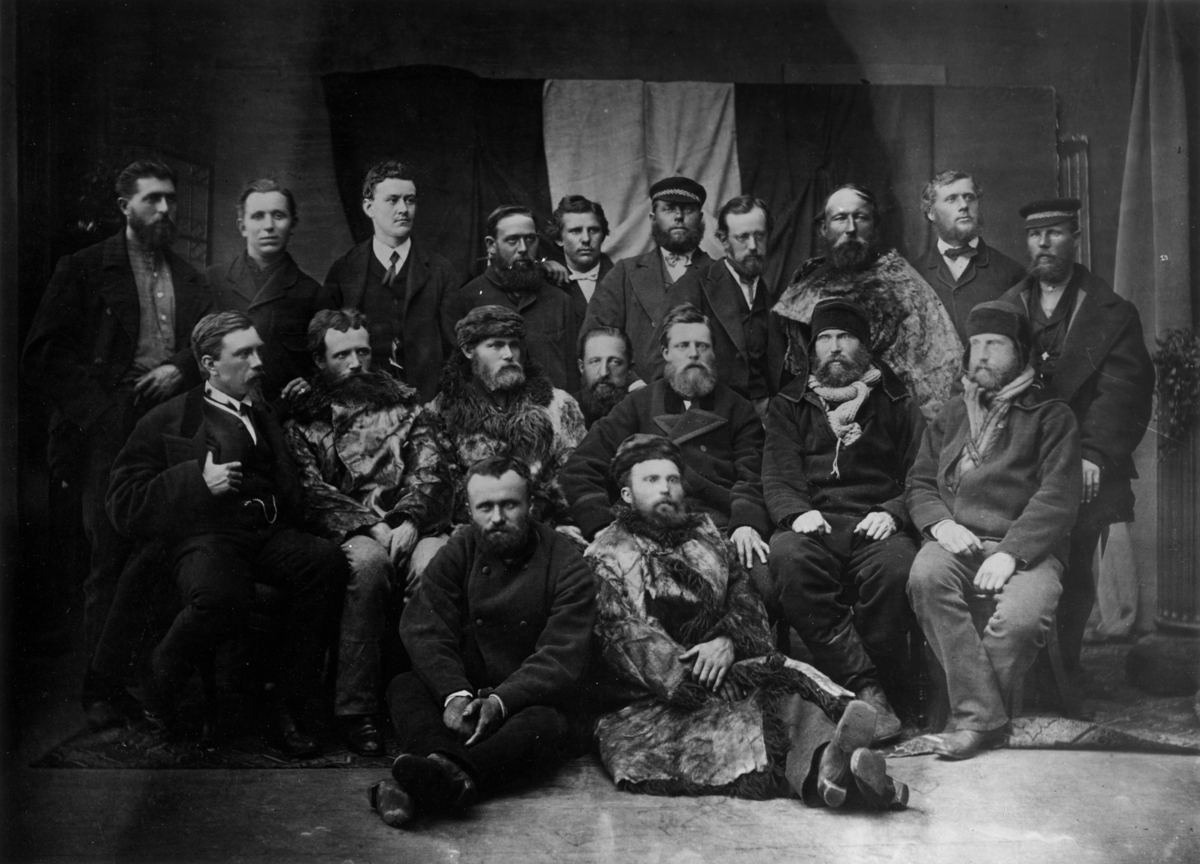Abstract
This photograph shows members of Germany’s Second North Polar
Expedition on the day they returned to Bremen harbor, concluding a
harrowing voyage of discovery. The crew had embarked from that same
harbor on June 15, 1869, with the east coast of Greenland as their
destination. Two ships made the journey: Captain Karl Koldewey’s
Germania, a screw steamer of 140
tons, and the Hansa, commanded by
Captain P. F. A. Hegemann. Only one ship returned. The
Hansa was crushed in polar ice after
being separated from the Germania,
but her crew disembarked and survived for six months, drifting more than
1,000 miles on an ice floe. Eventually, they reached the Moravian
mission station of Friedriksthal, to the west of Cape Farewell, in early
June 1870. A cape named after Bismarck marked the northernmost extent of
the Germania’s discoveries. In March
1870, Koldeweg and Lieutenant Julius Payer, the future explorer of Franz
Josef Land, led an expeditionary party that managed to travel 100 miles
north of the ship, being forced back only by a lack of provisions.
Payer, Koldewey, and Hegemann are pictured here in the middle row
(sitting second, third, and fifth from left). Koldewey published a
two-volume account of the voyage in 1874. He had also commanded the
first German expedition, which had sailed from Bergen in May 1868 and
returned that same year.
